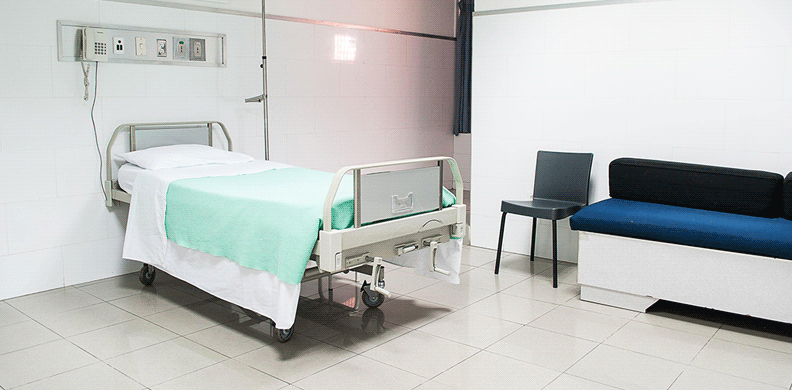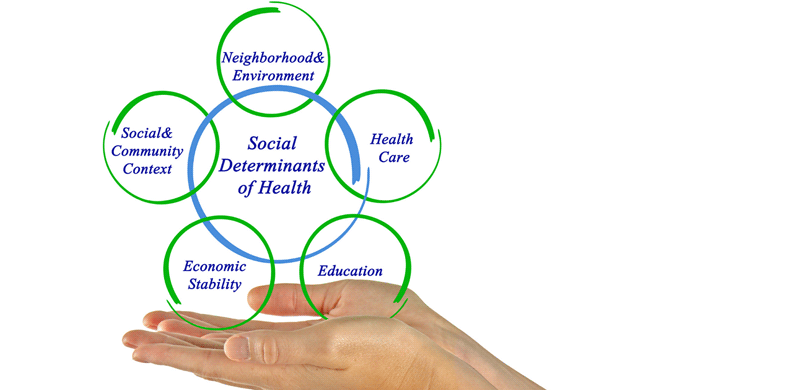
Unintended Consequences of Rural Obstetric Hospital Closures
With many rural hospitals closing their doors over the past twenty years for a variety of reasons, pregnant people living in these rural areas at risk for poorer outcomes.
Posted under: Maternal Health, Quality of Care, Social Determinants of Health/Disparities
Rural hospitals have been closing their obstetrical units en masse over the past twenty years. Across the United States, there are many reasons for this, such as physician and provider recruitment; hospital budgets cannot afford obstetric services; changes in population growth resulting in fewer young families. Whatever the reason, one thing is certain—pregnant people living in rural areas are at risk for poorer outcomes and the impacts that rural healthcare can create.
I recently spent several days in rural Iowa learning about (and experiencing) the unintended consequences of obstetric hospital closures. In Iowa alone, 40 birthing units have closed since 2000. In 2000, 77 out of 99 counties in Iowa had a birthing unit. By 2021, that number was 46 out of 99. And again, these reasons were varied and many—lack of provider recruitment, budget cuts, tort reform, and others. Many studies representing rural America continue to describe pregnant people as having to drive or travel for hours to reach obstetrical or well-woman care. Lack of resources has left these individuals to seek out care far from home. But a statement made during my visit resonated with me.
“What about the pregnant people who do not have the means to travel? What if they have no transportation, or cannot afford gas? They are those left behind in rural healthcare closures.”
This statement has been a part of my waking thoughts for days now. And while we speak of long commutes for seeking healthcare, we rarely discuss those who cannot travel, or who cannot afford to travel. We are so busy describing long journey times that we have forgotten to describe those who cannot journey at all.
And we assume that everyone has reliable internet access. “Just sign rural patients up for telehealth.” If it were only that simple. While most of us maneuver through our latest phones (which are supercomputers slightly larger than a deck of cards) or enjoy hassle-free Wi-Fi in our homes, we forget that not everyone in rural America is as fortunate. Telehealth relies on a strong internet signal that can carry video conferencing and a mechanism to refer to specialists or resources that may not be available locally. While COVID-19 had heralded a new era of telehealth, not everyone has jumped on the bandwagon. Both providers and patients included.
Many have described solutions to this issue, which tend to be multifaceted and require considerable resources and deliberation. But there are some learning moments that I would like to share with you that deserve greater attention:
“Get in your car and drive east on Interstate 25. Drive for one hour, and then drive back. And let us know what you think.”
I drove for one hour. And do you know what I saw? I saw some of the most awe-inspiring geographies I had ever seen. But I also saw nothing. A few gas stations, some farms, but other than that, nothing. And that was the whole point of the exercise. Access to medical care is tactical and requires a different type of thinking and planning in frontier communities. And that was during the summer when helicopters had relatively no barriers to flight. With no snow. And no blizzards. And again, that is a different story.

I say all this to come back to the beginning. I have had such remarkable and memorable intersections with rural health. I am certainly not the expert, but there are experts to whom we must listen and respond in kind. And if there is a message I want to relay from the experts, it is this:
There are unintended consequences of rural obstetric closures. We cannot forget that while we describe the hours-long journeys of pregnant people seeking care, we cannot forget about those who cannot make the journey in the first place and are left behind.
We cannot afford for zip codes to determine the outcomes of pregnancy, and for those who pregnancy impacts. Find your experts. Listen to their stories and make a plan to advocate for those whose voices cannot be heard over a distance.
I recently spent several days in rural Iowa learning about (and experiencing) the unintended consequences of obstetric hospital closures. In Iowa alone, 40 birthing units have closed since 2000. In 2000, 77 out of 99 counties in Iowa had a birthing unit. By 2021, that number was 46 out of 99. And again, these reasons were varied and many—lack of provider recruitment, budget cuts, tort reform, and others. Many studies representing rural America continue to describe pregnant people as having to drive or travel for hours to reach obstetrical or well-woman care. Lack of resources has left these individuals to seek out care far from home. But a statement made during my visit resonated with me.
“What about the pregnant people who do not have the means to travel? What if they have no transportation, or cannot afford gas? They are those left behind in rural healthcare closures.”
This statement has been a part of my waking thoughts for days now. And while we speak of long commutes for seeking healthcare, we rarely discuss those who cannot travel, or who cannot afford to travel. We are so busy describing long journey times that we have forgotten to describe those who cannot journey at all.
And we assume that everyone has reliable internet access. “Just sign rural patients up for telehealth.” If it were only that simple. While most of us maneuver through our latest phones (which are supercomputers slightly larger than a deck of cards) or enjoy hassle-free Wi-Fi in our homes, we forget that not everyone in rural America is as fortunate. Telehealth relies on a strong internet signal that can carry video conferencing and a mechanism to refer to specialists or resources that may not be available locally. While COVID-19 had heralded a new era of telehealth, not everyone has jumped on the bandwagon. Both providers and patients included.
Many have described solutions to this issue, which tend to be multifaceted and require considerable resources and deliberation. But there are some learning moments that I would like to share with you that deserve greater attention:
- During the past six years, I have had exceptional teachers, mentors, and guides throughout the rural health space. Departments of Health traditionally have been my best coaches and have provided an exceptional depth of understanding. I would strongly encourage hospital teams to engage with their Departments of Health at a much greater frequency to partner in achieving optimal maternal health outcomes in the community (but that is another story). And quite frankly, this is a recommendation I would make regardless of location (urban, rural, suburban, etc.).
- Here is an example of how policy can impact a state or region: Iowa is 50th out of 50 states for practicing OB/GYN providers in the state. Recruiting providers, particularly physicians, to rural communities can be a tough proposition. But this also extends to reasons why recruitment can be difficult. Tort reform and medical malpractice insurance can make it almost impossible to practice, particularly for high-risk services, such as childbirth. But when services are no longer available because of these types of barriers, who is it that suffers?
- Speaking of the Department of Health, I visited Wyoming Medical Center in Casper, Wyoming for a site visit back in 2018. Team members from the Wyoming Department of Health were spectacular and provided great insight into their state and remote/frontier communities. During my two days there, the Department of Health teams had only one request of me:
“Get in your car and drive east on Interstate 25. Drive for one hour, and then drive back. And let us know what you think.”
I drove for one hour. And do you know what I saw? I saw some of the most awe-inspiring geographies I had ever seen. But I also saw nothing. A few gas stations, some farms, but other than that, nothing. And that was the whole point of the exercise. Access to medical care is tactical and requires a different type of thinking and planning in frontier communities. And that was during the summer when helicopters had relatively no barriers to flight. With no snow. And no blizzards. And again, that is a different story.

I say all this to come back to the beginning. I have had such remarkable and memorable intersections with rural health. I am certainly not the expert, but there are experts to whom we must listen and respond in kind. And if there is a message I want to relay from the experts, it is this:
There are unintended consequences of rural obstetric closures. We cannot forget that while we describe the hours-long journeys of pregnant people seeking care, we cannot forget about those who cannot make the journey in the first place and are left behind.
We cannot afford for zip codes to determine the outcomes of pregnancy, and for those who pregnancy impacts. Find your experts. Listen to their stories and make a plan to advocate for those whose voices cannot be heard over a distance.


 Assistance: Is there funding available for transportation? Medicaid vouchers? Access to local programs to support the internet or other communication devices needed to interact with telehealth?
Assistance: Is there funding available for transportation? Medicaid vouchers? Access to local programs to support the internet or other communication devices needed to interact with telehealth?